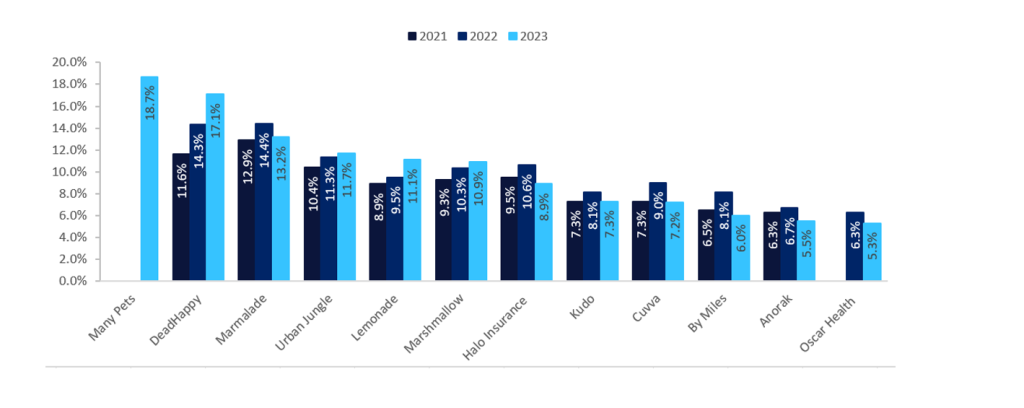With innovations in online, straight through processing (STP) and tele-underwriting, Andrew Gething, managing director of MorganAsh, a specialist in underwriting and claims management for the life and pensions industry, asks why are sales still declining? In Gething’s view, the practical truth is although there have been great strides in the processing of underwriting cases, sales are still in general terms declining.
The implementation of automated underwriting decisions or STP, rather than manual underwriting, has two benefits: these are the reduction in underwriting costs and the speed to deliver an underwriting decision in real time. The reduction in costs is a definite benefit.
Improving the speed for advisers certainly makes there life easier, but there is little evidence this has increased sales. For D2C on-line applications, the introduction of automated underwriting decisions would be expected to make the process easier and hence sell more.
However, while a lot of D2C services have been put in place, the reality is that the majority of on-line applications are being completed over the phone. The D2C on-line system is effectively acting just as a lead generation tool.
Consumers are not embracing the self-service system provided for them. Why is this? The old mantra that "life insurance is sold and not bought" may give us a clue.
Clearly, life insurance purchases are only undertaken once or twice in a person’s lifetime, and the level of complexity is difficult to understand for the consumer. Is it that consumers want to discuss the purchase with someone to make sure they are doing the right thing? The practical evidence is this is the case.
How well do you really know your competitors?
Access the most comprehensive Company Profiles on the market, powered by GlobalData. Save hours of research. Gain competitive edge.

Thank you!
Your download email will arrive shortly
Not ready to buy yet? Download a free sample
We are confident about the unique quality of our Company Profiles. However, we want you to make the most beneficial decision for your business, so we offer a free sample that you can download by submitting the below form
By GlobalDataOne of the downsides of on-line STP systems is their inability to handle difficult and complex cases. While companies may boast STP rates of 80%, the reality is that this means 20% of consumers are being processed badly, and also to reach an 80% STP rate, at present many consumers who may qualify for life cover and being told they cannot have it.
There is growing concern on the negative effect on consumers of these cases, and the negative effect on the industry as a whole.
However, most agree that while there are misgivings in the effectiveness of the present crop of STP implementations they are a necessary step in the digitisation of life insurance.
Most on-line e-commerce applications evolve over time, using the old trial and error approach. However, most life insurance applications are designed in a rigid fashion, and are then difficult to change.
While regulation is often cited for requiring this strict process, it is argued that this is not the case. At the end of the day we need ensure the appropriate information is gathered for the appropriate risk, and the appropriate warnings are given prior to purchase.
Need for dynamism
But there is no reason why the order of the process has to be fixed. The truth is present on-line approaches implement an old paper application process, and we have yet to move to dynamic systems that can amend their process in line with consumers’ whims and wishes.
It is noted we have moved from a human adviser process directly to an on-line process without any human intervention, and while this may be appealing from a cost point of view, maybe it was unrealistic to take such a leap, rather than making a gradual change.
So how do we progress?
We need to limit the focus on risk management and compliance issues for on-line applications, and let consumers control how and when they want to interact. This may mean they go online, use web chat, a phone, iPad or a smartphone. It is the consumer’s choice.
We must provide the back-up, help, customer service, adviser services, or tele-interview services at evenings and weekends to back up the on-line journey. Many of these interactions may be small, but equally highly valuable.
Over the years we have swung from simple products and simple underwriting to complex underwriting to overcome non-disclosure experienced with the simple approach.
These approaches have been focused on us knowing better than our consumers. Surely a better approach is to offer the consumer the choice to provide more information for the reward of a better price, and let the consumer choose if they want to put in the effort for the price reduction or not.
Our approach to building these systems needs to evolve to a more flexible format using tools, like many in the e-commerce arena.
We need to be able to build, test and learn and flex the solution to match consumer engagement preferences. These may be totally different for different distribution channels and different consumer groups. The old approach of spending a year to build a system and then failing to have the budget for the second phase is not just unsustainable.







